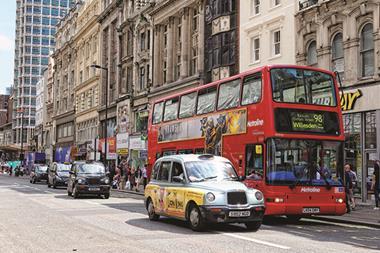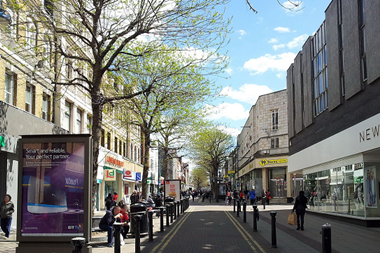It wasn’t so long ago that we were repeatedly being told of the demise of the high street – and the reports of its death were not an exaggeration, as anyone who lives in a town whose lifeblood was sucked out seemingly overnight by a new out-of-town shopping centre knows all too well.

But that was then. In the past few years, David has taken on Goliath and the two have experienced a strange reversal of fortunes.
While some out-of-town centres have been hit hard by the relentless rise of online and the multiple failures of major high-street retailers (the high-street descriptor increasingly redundant these days), the towns they abandoned have bounced back – rejuvenated by the independent retailers that trickled in to fill the void and often a focus on culture or leisure.
Take Margate and Cliftonville, which have been so transformed by the arrival of the Turner Contemporary, independent boutiques and trendy cafés that Cliftonville (where I live) was last week named the 18th hippest place to live in the country (despite the fact it’s where I live).
Nothing if not bold
Is Woolwich’s high street about to undergo a similar renaissance? The news this week that British Land has bought a 4.9-acre slab of its town centre with a view to undertaking retail-led regeneration certainly suggests so – and this time, interestingly, thanks to a developer of the very sort once blamed for the high street’s decline.
The move is nothing if not bold. In the face of a slew of negative headlines about bricks-and-mortar retailers, other developers have been sitting on their hands or putting the brakes on development. Not British Land, though.
Last year, it bought a smaller town centre site in Ealing – also on the Elizabeth line – from Benson Elliot for £49m where it has similarly bold town centre redevelopment plans. Indeed, as of September 2017, British Land had £525m of committed development capital expenditure versus £53m at Landsec, according to Peel Hunt.
The decision to switch its focus from shopping centre development to tired town centre redevelopment could prove to be a masterstroke. For one, although there are not many opportunities to snaffle a big tranche of land in one fell swoop, they are out there as both Woolwich and Ealing demonstrate, and there has to be an advantage in having a single large propco – as opposed to myriad small retailers and developers – driving their regeneration.
”In the face of of negative headlines about bricks-and-mortar retailers, other developers have been sitting on their hands or putting the brakes on development”
That is, of course, assuming it gets the retail mix right. Big is not always beautiful as far as some town centres are concerned. Fortunately, British Land seems to be alert to the fact and says it is hoping to attract independent retailers rather than the likes of Zara.
It is still a risky play, of course, as British Land boss Chris Grigg himself admitted at the EPRA Insight event last month when he talked of the challenges facing retail landlords and retailers today.
“Risk and complexity have gone up,” he said. “Older business models are being put under pressure more quickly than would have been the case five years ago.”
However, he added, the company’s assets were located in areas that “retailers can make a lot of money” in. Who would have guessed a few years ago that in 2018 those areas would include high streets?






























No comments yet